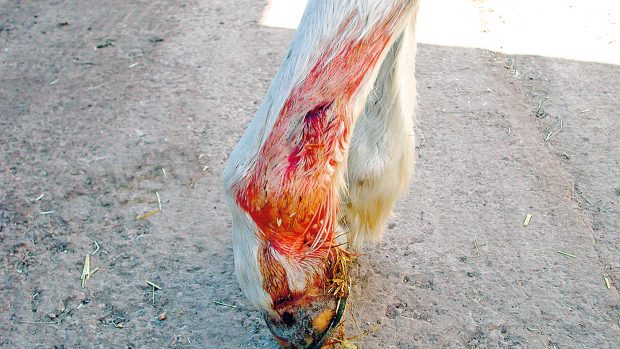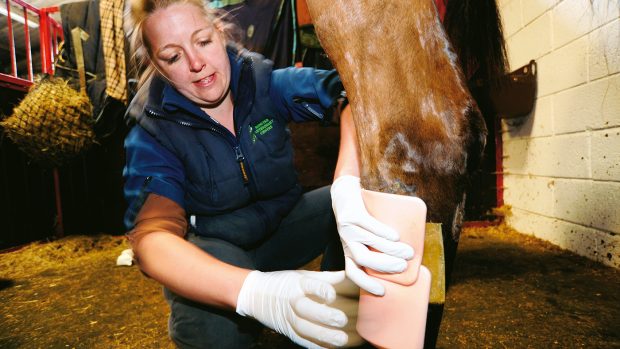While falls and knocks are more common in the equine environment than injuries accompanied by severe bleeding, accidents with implements such as knives, scissors and clippers do occur from time to time.
Wearing disposable gloves if available, uncover the wound by cutting or removing clothing if necessary. Check the wound for foreign bodies and if none are found apply direct pressure over the wound with a sterile, non-fluffy dressing or clean pad (if available) and the flat of your hand.
If there is a foreign body present do not apply pressure directly to the wound as this will press the object further into the body. Do not try to remove the foreign body either. Instead press firmly either side of the object, pushing the edges of the wound together.
If the bleeding is coming from a limb, try to raise and support the injury above the casualty’s heart level to help reduce blood loss.
If there is no foreign body present then a dressing may be firmly bandaged in to place to maintain pressure on the wound. The bandage should not be so tight that circulation is restricted.
A further layer of padding may be used on top of the original dressing if the bleeding persists. If blood becomes visible through the dressings, then remove them both and apply a fresh dressing accurately over the wound.
If a foreign body is present gently build up padding either side of the object, then carefully bandage a dressing into place without pressing the object further into the wound.
Wounds at a joint crease are likely to bleed profusely as they are the sites of the major blood vessels. When controlling bleeding in these areas adequate circulation to the extremities must be checked and maintained.
Place a sterile dressing or pad over the injury and bend the joint to hold it firmly in place and maintain pressure on the wound. Raise the limb above heart level if possible and transport the casualty to hospital in this position.
An injury that results in severe bleeding needs urgent medical assistance and anyone involved with horses should ensure their tetanus vaccinations are kept up-to-date.
Any severe loss of bodily fluid is likely to lead to shock so be aware of the signs and treat urgently as necessary. Click here to read more about shock. If shock is suspected, and the injuries allow, lay the casualty down, with their legs raised and supported above heart level.
|
||
 |
||


 Get up to 19 issues FREE
Get up to 19 issues FREE TO SUBSCRIBE
TO SUBSCRIBE 



